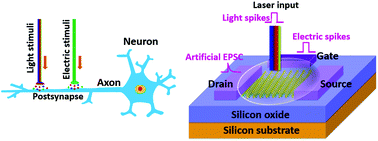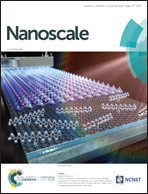2D electric-double-layer phototransistor for photoelectronic and spatiotemporal hybrid neuromorphic integration†
Abstract
The hardware implementation of neuromorphic computing has attracted growing interest as a promising candidate for confronting the bottleneck of traditional von Neumann computers. However, most previous reports are focusd on emulating the synaptic behaviors by a mono-mode using an electric-driving or photo-driving approach, resulting in a big challenge to synchronously handle the natural photoelectric information. Herein, we report a multifunctional photoelectronic hybrid-integrated synaptic device based on the electric-double-layer (EDL) MoS2 phototransistor. Interestingly, the electric MoS2 synapse exhibits a potentiation filtering effect, while the photonic counterpart can implement both potentiation and depression filtering effects. Most importantly, for the first time, photoelectronic and spatio-temporal four-dimensional (4D) hybrid integration was successfully demonstrated by the synergic interplay between photonic and electric stimuli within a single MoS2 synapse. An energy band model is proposed to further understand such a photoelectronic and spatio-temporal 4D hybrid coupling mechanism. These results might provide an alternative solution for the size-scaling and intellectualization campaign of the post-Moore era, and for more sophisticated photoelectronic hybrid computing in the emerging neuromorphic nanoelectronics.



 Please wait while we load your content...
Please wait while we load your content...